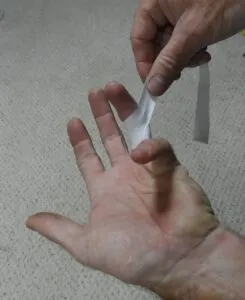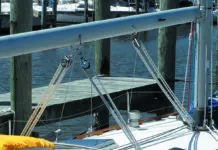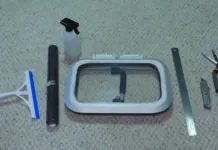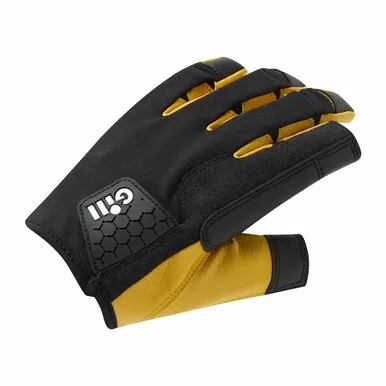Hands take a beating while sailing, from chafe, pressure points, cuts and cold. Hard heads will say “you just need to let the calluses build up,” but my other hobbies are rock climbing and cycling, plus ice climbing in the winter and all of the other stuff DIYers do. Combined it’s quite enough. I’ve seen the arthritic hands old carpenters wear, with appendages that resemble ironwood roots more than fingers. No thanks. Like shoes, fit is everything, but these are some that have worked for us.
SAILING GLOVES
We used Gill Trophy gloves four decades ago, back when they were leather. We’ve also used West Marine, Ronstan, Harken, Musto and now the new Gill line, which went through a major overhaul in 2022. We’re hooked on Gill Pro Long Finger ($50) and Gill Championship Long Finger gloves. They changed materials from leather to all synthetic, and changed the wrist strap so that it keeps the glove on your hand just so. Plus, the fingers are the perfect length for us. The back is a wind resistant soft shell rather than the mesh competing gloves use, making them both cool in the summer and surprisingly warm for the shoulder seasons winter. Unlike sticky gloves that have too much grip when new and then too little within a season, these stay right in the sweet spot. The Pro protects sore finger tendons and wears longer but is a little stiff at first.
The Championship is great right out of the box but is not quite as protective. Our next choice is The Ronstan Sticky Race Full Finger ($42), which is not too sticky and wears well. Note: long finger and three finger sailing gloves are 3-finger designs, with the tips of the thumb and index fingers cut off.
WINTER GLOVES
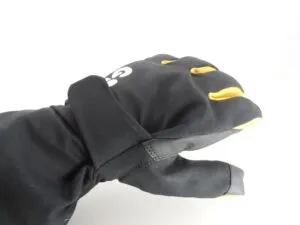
Long finger sailing gloves suit us down to about 50 F. Below that, we’ve tried 3-season and winter gloves from all the brands, as well as ski gloves and high-end climbing gloves. We never liked the old Gill Helmsman. It was bulky and shifted on the hand. But like their sailing gloves, it got a complete redesign in 2022, and the new Gill Helmsman ($58) has become our top choice for sailing and cycling. The insulation was slightly reduced, but it is still warm and dry. The new wrist strap prevents any movement on the hand, and the fingers, again, are just the right length. It is the only true cold weather glove that we can actually sail the boat in—throwing lines on and off winches and quickly coiling line.
WORK GLOVES, COATED
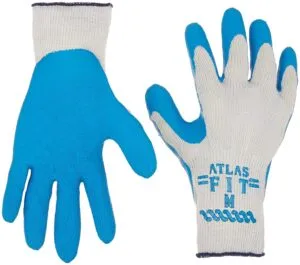
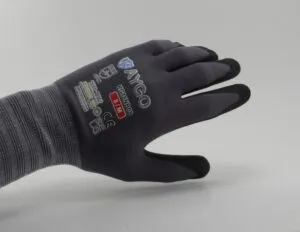
An old favorite, we still favor the Atlas Grip ($5). Mostly, we use these for handling dock lines, hauling anchor rode and bottom cleaning. Extra guests or dinghy sailing? Fit them down a size and snip the tip if the thumb and index finger off and you have some top-end dinghy gloves. For lighter work, including painting, we like the Kaygo ($4).
WORK GLOVES, WINTER (DOUBLE COATED)
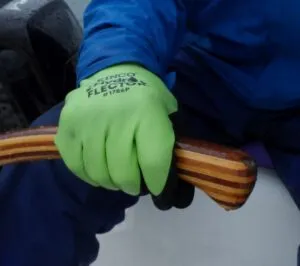
The double coated Hydroflector ($17) gloves offer waterproof protection and a lot of warmth for the price. They are favorites for all the things we use coated gloves for, plus winter sailing and winter kayaking. They don’t wear as well as sailing gloves, they have too much grip for coiling ropes and they’re a bugger to get on and off if they get wet inside. But they’re really warm and have killer grip. When not used as work gloves, they make great spares for guests that forgot warm gloves.
LEATHER
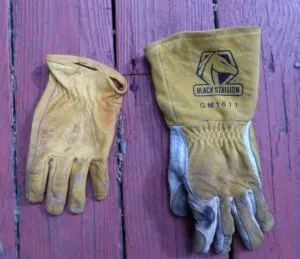
Anything from the hardware store that fits is fine but expect to pay $20 for quality. They’re not for sailing, but they make heavy work lighter. I bought my last pair in a hurry when I faced hours of work with a heat gun, peeling old VHB tape in preparation for window replacements, and coated gloves just weren’t cutting it.
TIPS:
Wear and Grip. Are your favorite sailing, cycling, ski or leather work gloves wearing and loosing grip? Try coating them with a diluted solution of Gorilla Spray Adhesive (see “Liquid Chafe Protection“) (10% Spray adhesive diluted with a solvent blend of 10% acetone and 90% xylene). Applied lightly to wear areas only, the solution soaks in, bonding the fibers together and reducing wear by five times. On the surface, it increases friction in a measured way, not too sticky but not slippery either. It will stiffen the glove a little, so go easy. We adjusted the formula with pine rosin, process oils and rubber additives, but the Gorilla Spray Adhesive and solvent blend worked best.
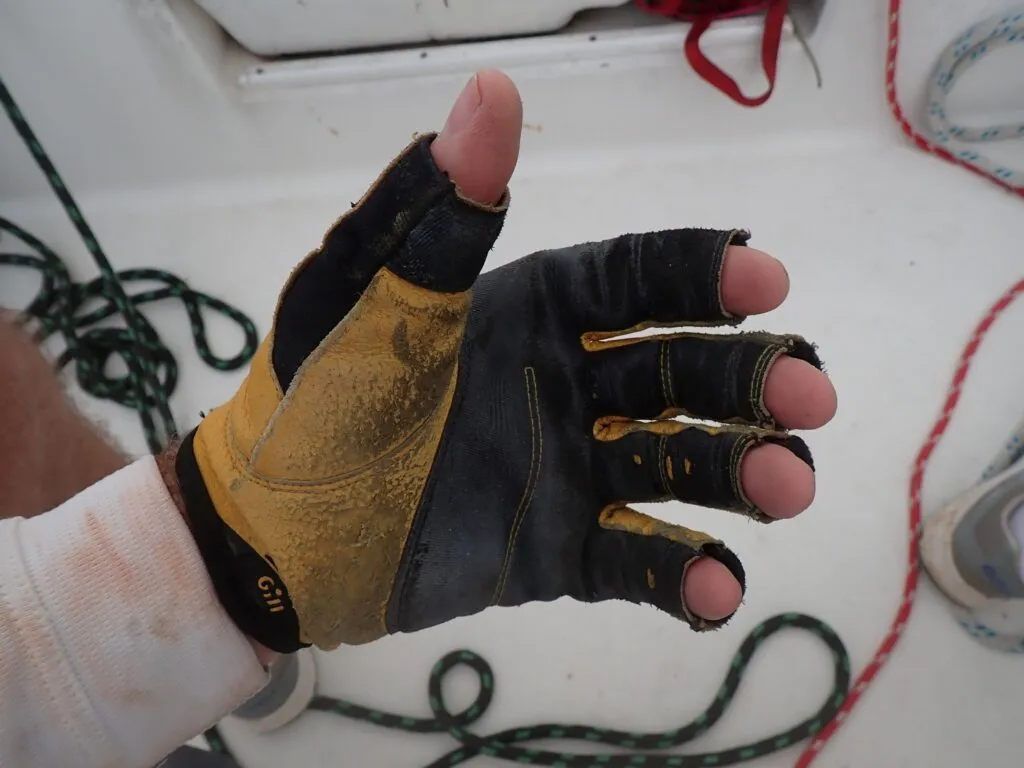
Tendon Bracing. Sometimes my finger tendons get a bit overused from all the climbing and sailing. A protective taping can really help, primarily on the index and ring fingers. Pull out about 9 to 10 inches of tape, start at the base of the finger, and don’t apply so tightly that the circulation is restricted. Good for protecting fingers during hard sailing and hard maintenance.
